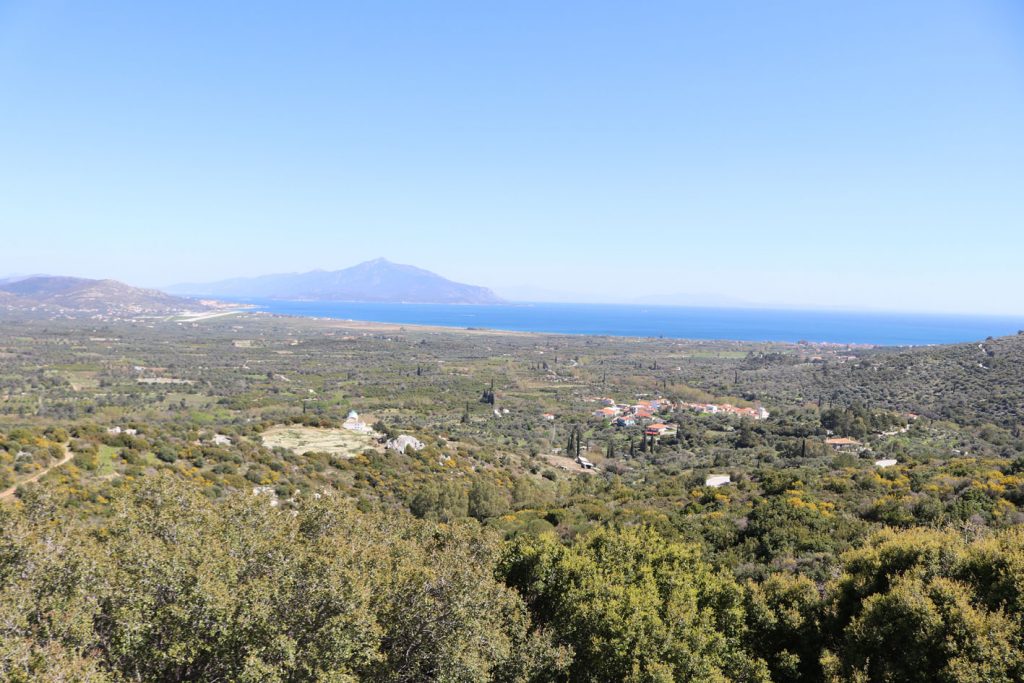Geoarchaeological and Archaeohydrological Investigations in the Chora Plain and the Environment of the Heraion of Samos
Ancient written sources report that the Samian community has suffered from shortages in its food supply during almost its entire history. This problem is partly caused by the geological and geomorphological situation of the island, which hardly offers any suitable areas for agriculture, even though there is a relatively high abundance of water. One of the few areas on the island suitable for a wider range of agricultural purposes is the Chora plain between the ancient city of Samos and the Heraion. The ancient land holdings (Anaitis/Batinetis) on the mainland seem to have offered only limited compensation. Looking at this very vulnerable food supply, the question arises on the relevant coping strategies of the local society/people in the respective historical/cultural context, which may also have altered within changing ecological and climatic conditions.
The aim of the project is to reconstruct the environmental conditions on Samos and especially in the Chora plain over the past 5000 years by using different geoarchaeological, geophysical and palaeobotanical methods. One key aspect is the water availability for agricultural (economic) purposes with respect to different soil hydrological properties in the area.
The project expands the investigations of the Groundcheck project of 2019 by C. Külls with regard to I. the temporal dimension of the change of the landscape including the shift of the coastline; II. the effects of climate and environmental changes on agricultural yields; III. the extent of human impact on these processes through (a) construction activities, (b) agriculture and (c) hydraulic engineering measures; IV. the fertility of the soils in general and their suitability for certain types of cultivation and crops, as well as V. the reconstruction of the land-use and land-cover changes.
In a medium term perspective, a model is going to be developed for estimating the size of the population that could supply by the island itself. In addition, the research should help to assess (a) the local conditions for cultivating exportable “luxury products”, (b) the resource capacity for the cultivation of essential agricultural products, and (c) the resilience of land-use activities to climatic fluctuations.
The data collected by the project will be available to other projects that require paleoclimatological and paleoecological data for the interpretation of archaeological finds in the surrounding areas of the southeastern Aegean. In addition, the results have a general relevance for the understanding of historical and current adaptation measures and processes to climate change or climate-related changes and cultural resilience in the Eastern Mediterranean.

Project members and partners
Dr. Jan-Marc Henke (Projectmanagement, Director of the excavations at the Heraion of Samos, DAI Athen)
Prof. Dr. Pavlos Avramidis, Professor für Sedimentologie an der Universität Patras (Griechenland)
M. Sc. Sara Dannemann, Institut für Ökosystemforschung der Christian-Albrechts-Universität Kiel
Prof. Dr. rer. nat. Wolfgang Rabbel, Professor für Geophysik am Institut für Geowissenschaften der Christian-Albrechts-Universität Kiel, Mitantragsteller des Exzellenzcluster ROOTS im Forschungsschwerpunkt „Socio-Environmental Cultural Change“, Co-Sprecher des Clusters. Prof. Dr. Ingmar Unkel, Professor für Umweltgeschichte und Umweltarchive an der Christian-Albrechts-Universität Kiel, Mitantragsteller des Exzellenzcluster ROOTS im Forschungsschwerpunkt „Socio-Environmental Cultural Change“, Leiter des Subclusters „Socio-environmental Hazards“
